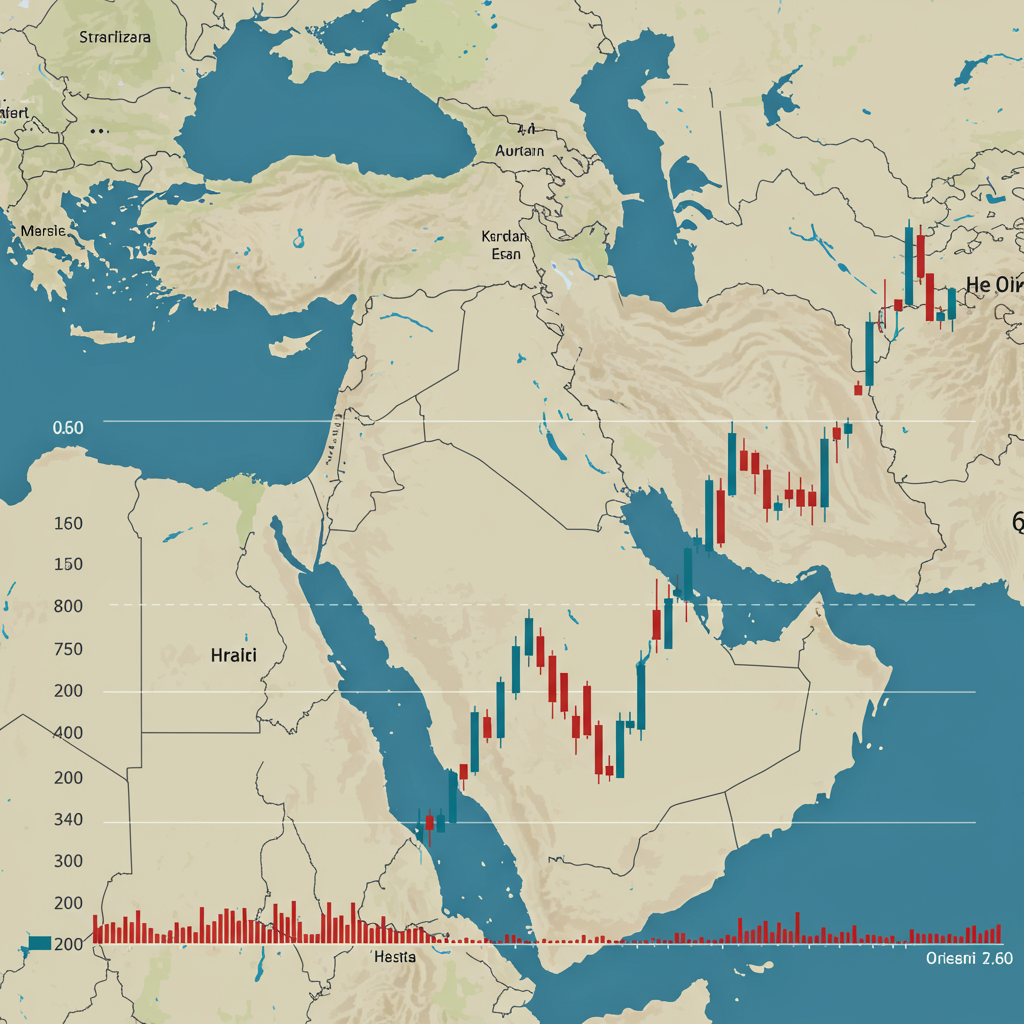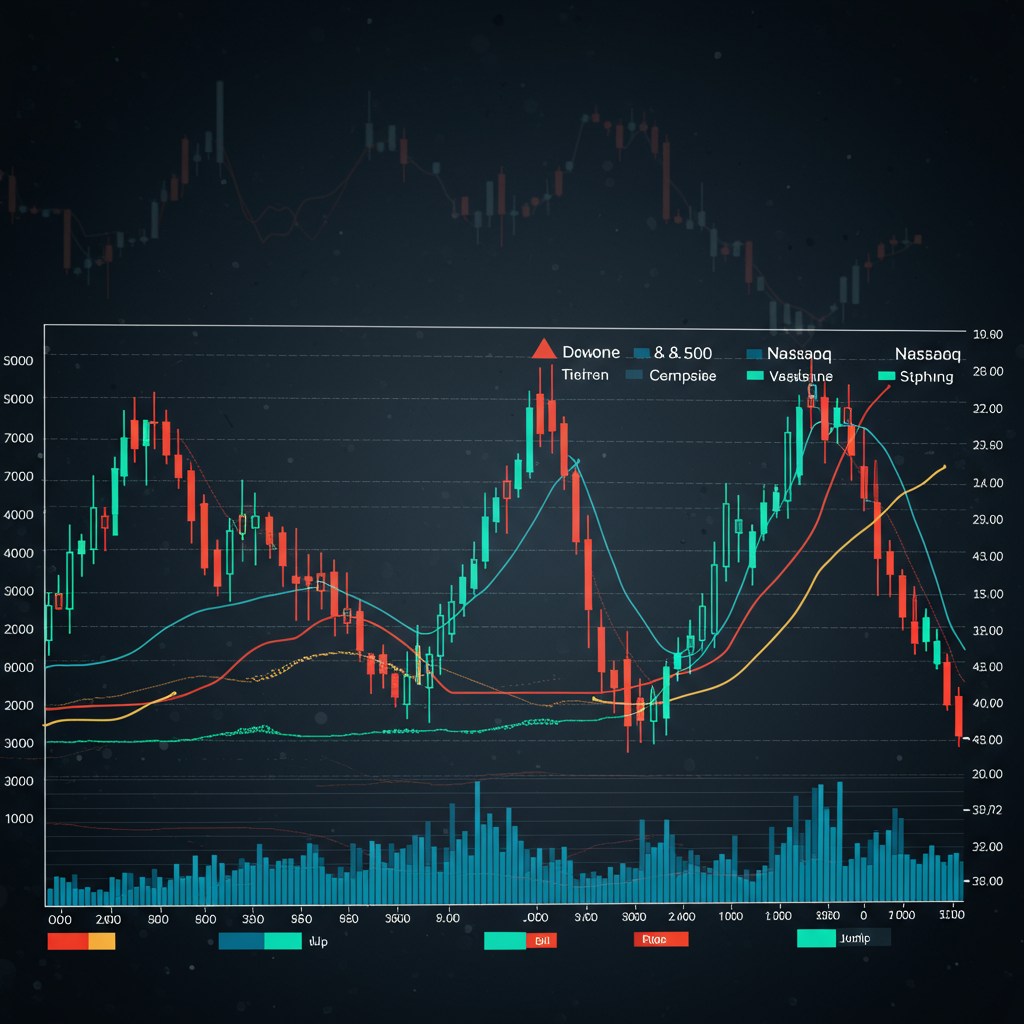Recent flare-ups between Israel and Iran might lead you to expect chaos in global oil markets. Historically, instability in the Middle East – home to vast oil reserves and critical shipping lanes – has often sent crude prices skyrocketing, threatening economic stability worldwide. Yet, surprisingly, the latest tensions haven’t triggered a major energy crisis.
While there was an initial jolt immediately following reports of Israel’s attack on Iran, with crude oil prices jumping about 7% within hours and briefly hitting $80 per barrel, the spike was remarkably short-lived. Prices quickly reversed course and are now trading lower than they were before the conflict began. This muted reaction, even involving a major producer like Iran, has puzzled some observers and highlights a fundamental shift in the global oil landscape.
“We saw a lot of people… saying, ‘Why isn’t crude reacting more?'” notes Rebecca Babin, a senior energy trader at CIBC Private Wealth. This sentiment underscores the market’s unexpected resilience.
The question is: Why didn’t this significant geopolitical event escalate into the kind of oil crisis seen in decades past? Experts point to a confluence of factors that have buffered the market against shocks that once would have caused panic.
Why the Oil Market Stayed Calm Amidst Geopolitical Fire
Several key elements explain the lack of a sustained oil price surge:
1. No Direct Targeting of Oil Supplies (Yet)
The most significant threat perceived by the oil market is a physical disruption to supply. The Strait of Hormuz, a narrow chokepoint between Iran and Oman, is particularly vulnerable, with approximately 20% of the world’s oil supply passing through it daily. A move by Iran to block the Strait or directly attack oil infrastructure would be a major event with profound global economic consequences, given the world consumes over 100 million barrels per day.
However, Iran has not targeted critical oil facilities or attempted to close the Strait of Hormuz. Analysts believe this is unlikely at this point, largely because such actions would inflict immense economic pain on Iran itself. While some discussions about potential targets have occurred, the focus of actual military actions has reportedly not been on oil fields or export routes, preventing the most feared scenario from materializing.
Furthermore, key producers in the region have developed workarounds. Both Saudi Arabia and the United Arab Emirates possess pipelines that allow them to bypass the Strait of Hormuz, transporting significant volumes of oil (e.g., Saudi Arabia’s pipeline to Yanbu on the Red Sea, and the UAE’s pipeline to the Fujairah terminal) directly to terminals outside the chokepoint. This built-in redundancy reduces the leverage a disruption to the Strait might otherwise have.
2. Market Skepticism and the “Boy Who Cried Wolf” Effect
Oil traders have grown wary of reacting impulsively to geopolitical headlines. In the past, the mere possibility of supply disruption fueled speculative buying and dramatic price spikes driven by fear. Today, however, traders have witnessed numerous instances over the past few years where initial spikes following events like the Russia-Ukraine conflict, earlier Israel-Iran tensions, or the Hamas attack on Israel failed to result in sustained supply disruptions.
“Throughout all the other geopolitical events that have happened over the last several years, we get these spikes and then supply is not impacted and they revert very quickly,” explains Babin. This repeated pattern has taught the market to be more cautious. Like the story of the boy crying wolf, each unrealized threat diminishes the market’s knee-jerk reaction.
3. Ample Global Supply and Spare Capacity
Fundamentally, the global oil market remains well-supplied. Demand growth has been relatively sluggish, partly attributed to a less robust Chinese economy than anticipated. Conversely, supply has been robust, including efforts by OPEC and its allies to manage output but also structural factors boosting production.
Crucially, OPEC+ members, particularly Saudi Arabia and the UAE, hold significant spare production capacity – estimated at around 5.7 million barrels per day collectively (with Saudi and the UAE holding 4.2 million bpd). This large buffer means that even if a moderate disruption were to occur, there’s ample capacity elsewhere to potentially increase output and compensate, helping to stabilize prices. Analysts anticipate this oversupply situation could persist, providing a cushion against potential shocks.
4. The Transformative Power of U.S. Oil Production
Over the last decade, the rise of the United States as the world’s largest oil producer has fundamentally altered global energy geopolitics. The shale revolution, unlocked by technologies like fracking, significantly lessened global dependence on Middle Eastern crude. The U.S. is not only the top producer but also the largest consumer.
“The impact on the oil market is profound,” says Jim Burkhard, who heads crude oil market research for S&P Global. He highlights U.S. production as a critical factor limiting the response of the oil market to Middle East conflicts. While there are differing forecasts on the short-term trajectory of U.S. production (some analysts predict a slight decline based on current market signals), the underlying capacity and the ability of the shale industry to potentially ramp up production quickly in response to a prolonged, major supply disruption provide a significant structural buffer.
5. Seasonal Demand Dynamics
The oil market operates on its own calendar. Even as summer begins in the Northern Hemisphere, oil buyers are already looking ahead. “The buyers of crude oil are now buying for August and beyond,” notes Susan Bell, senior vice president of commodities analysis at Rystad Energy. This seasonal shift moves the market towards autumn, typically a period of lower demand compared to peak summer driving season. This natural dip in expected demand also contributes to softening prices.
Beyond Oil: Broader Market and Economic Signals
The relative calm in oil prices has also contributed to stability in broader financial markets, including equities and bonds.
Furthermore, the potential impact of oil price shocks on the wider economy and central bank policy is evolving. While the 1970s oil shocks taught central banks the danger of unanchored inflation expectations and the 2022 surge reinforced the need for aggressive action, a future significant spike might pose a different challenge. Some economists suggest that in the current economic climate, higher prices at the pump could weigh more heavily on consumer spending, potentially leading central bankers like the Federal Reserve to focus less on inflation expectations and more on the potential dampening effect on overall economic growth.
In conclusion, the lack of a sustained oil crisis despite recent Middle East tensions is a testament to a combination of factors: the absence of direct attacks on oil supplies and critical chokepoints, a more experienced and skeptical trading community, structural oversupply with ample spare capacity and bypass options, the pivotal role of U.S. production, and seasonal demand shifts. These elements have created a more resilient market, preventing geopolitical shocks from automatically translating into price crises, at least for now.




